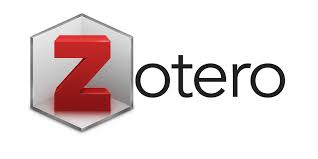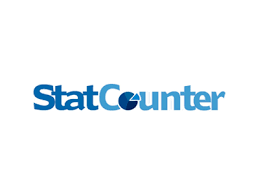Pengembangan Media Pembelajaran Matematika Melalui Video Pembelajaran pada Mata Kuliah Teori Bilangan
DOI:
https://doi.org/10.29240/ja.v4i1.4074Keywords:
Learning media, Video, Number TheoryAbstract
Developing a video for learning mathematics in the Number Theory course as the purpose of this research. This needs to be done to help students understand the material during online learning. The development procedure in this R&D research is based on the ADDIE product development model (analyze, design, development, implementation, evaluation). The stages of this research are limited to the development and trial stages. Furthermore, at the trial stage, one class is carried out to take the Number Theory course in the odd semester for the Academic Year 2021-2022. The results of this study are (1) several learning videos have been formed in the Number Theory course based on sub-materials; (2) the learning video media is declared feasible based on the results of the assessment from a team of experts consisting of two validators, the results obtained from four aspects, namely the material aspect, language and image aspects, presentation aspects, and finally the display aspect with a final average score of 75 with appropriate criteria; and (3) the results of the trial obtained the results of the completeness test, the average score was 75.28 and the comparative test results obtained the average value. The mean of completeness of the experimental class and the control class were 75.28 and 60.28. The value of the experimental class is better than the control class.
Downloads
References
Angkoro, R. & A. Kokasih. (2007). Optimalisasi Media Pembelajaran. Jakarta: PT. Grasindo.
Arikunto, Suharsimi. (1993). Manajemen Penelitian. Jakarta: PT. Raja Grafindo.
Arsyad, Azhar. (1997). Media Pembelajaran. Jakarta: Raja Grafindo Presada.
Arsyad, Azhar. (2010). Media Pembelajaran. Jakarta: Raja Grafindo Presada.
Dabbagh, N and Ritland, B. B. (2005). Online Learning, Concepts, Strategies and Application. Ohio: Pearson.
Enriquez, M. A. S. (2014). Students Perceptions on the Effectivenss of the Use of Endomoas a Supplementary Tool for Learning. DLSU Research Congress, 2014, 1 – 6. Retrieved from https://www.dlsu.edu.ph/wp-content/uploads/dlsu-research-congress-proceedings/2014/LLI-II-010-FT.pdf.
Guskey, dkk. (1982). The Effektivenessof Mastery Learning Strategies In Undergraduete Education Courses. University of Kentucky.
Iftakhar, S. (2016). GOOGLE CLASSROOM: WHAT WORKS AND HOW? Journal of Education and Social Sciences, 3 (1), 12 – 18. Retrieved from https://www.jesoc.com/wp-content/uploads/2016/03/KC3_35.pdf.
Munandar. (2009). Pengembangan Kreatifitas Anak Berbakat. Jakarta: Rineka Cipta.
Munir. (2012). Multimedia Konsep dan Aplikasi Dalam Pendidikan. Bandung: Alfabeta.
Pangondian, R. A., Santosa, P. I., & Nugroho, E. (2019). Faktor-Faktor yang Mempengaruhi Kesuksesan Pembelajaran Daring Dalam Revolusi Industri 4.0. In Seminar Nasional Teknologi Komputer & Sains (SAINTEKS), 1 (1), 56 – 60. Retrieved from https://prosiding.seminar-id.com/index.php/sainteks/article/view/122
Ridha, Firman, & Desyandri. 2021. Efektifitas Penggunaan Media Video pada Pembelajaran Tematik Terpadu di Sekolah Dasar Saat Pandemi Covid-19. Jurnal Pendidikan Tambusai, 5 (1), 154 – 162. Retrieved from http://jptam.org/index.php/jptam/article/view/925.
Sicat, A. S. (2015). Enhacing College Students Proficiency in Business Writing Via Schoology. International Journal of Education and Research, 3 (1), 159 – 178. Retrieved from https://ijern.com/journal/2015/January-2015/14.pdf
Sudjana, Nana. & Rivai, Ahmad. (2002). Media Pengajaran. Bndung: Sinar Baru
Zhang, D., Zhao, J. L., & Nunamaker, J. F. (2004). Can e-learning replace classroom learning? Communications of the ACM.
Downloads
Published
Issue
Section
Citation Check
License
Authors who publish with ARITHMETIC: Academic Journal of Math agree to the following terms:
- Authors retain copyright and grant the journal right of first publication with the work simultaneously licensed under a Creative Commons Attribution-NonCommercial-ShareAlike 4.0 International License (CC BY-NC-SA 4.0) that allows others to share the work with an acknowledgment of the work's authorship and initial publication in this journal.
- Authors are able to enter into separate, additional contractual arrangements for the non-exclusive distribution of the journal's published version of the work (e.g., post it to an institutional repository or publish it in a book), with an acknowledgment of its initial publication in this journal.
- Authors are permitted and encouraged to post their work online (e.g., in institutional repositories or on their website) prior to and during the submission process, as it can lead to productive exchanges, as well as earlier and greater citation of published work (See The Effect of Open Access).







